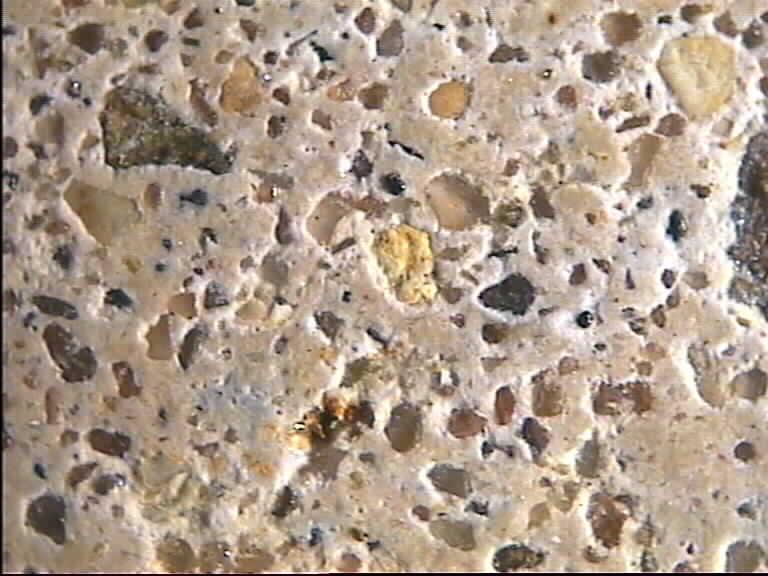Concrete Analysis
Most of the routine tests we perform on hardened concrete are carried out to BS1881:1988, these include;
- Cement Content of Concrete
- Aggregate Content of Concrete
- Aggregate Grading of Concrete
- Slag Content of Concrete
- Original Water Cement Ratio
- Presence of HAC in Concrete
- Sulphate content of Concrete
- Sulphide content of Concrete
- Chloride content of Concrete
- Alkali content of Concrete (Sodium and Potassium ions)
- Loss on ignition of Concrete
We are often called upon to carry out other chemical and physical tests on hardened concrete to other standards and can usually respond to your needs.
We will support you through your project using our extensive knowledge of concrete, gained from over 30 years’ experience investigating construction failures and defects.
What is concrete?
Concrete is generally understood to be a mixture of cement, water and aggregate. Concrete can be moulded into various shapes using moulds or formwork, either in the factory or on-site.
To achieve strength, concrete must be formed of suitable cement, aggregate and water, thoroughly mixed in the correct the correct proportions to give the lowest water : cement ratio, and cement : aggregate ratios.
Portland cements are by far the widest used cements in concrete. Other commonly encountered cements are super-sulphated cement and high alumina cement. These cements are termed hydraulic cements ie they depend on water. Very little water is required to hydrate cement, too much water causes voids, every 1% additional water reduces concrete strength by 5%.
Water for use in concrete should be reasonably free from impurities, such as suspended solids, organic matter and salts, all of which can adversely affect the setting, hardening and durability of concrete. Sea water can be used for Portland cement concrete, and can safely be used for plain concrete, however because salt promotes the corrosion of steel, sea water should never be used for reinforced concrete.
Aggregates must be sufficiently strong, free from constituents that can react harmfully with the cement, be well graded into optimal sized particles and have minimal or no moisture content. Sedimentary rock types such as greywacke, shale and mudstone are generally to be avoided as they have been shown to cause excessive shrinking, warping and deterioration in concrete.
High density of aggregate in any concrete generally provides the highest strength.
Well compacted concrete with low water cement ratio, generally provides good resistance to water absorption. Frost damage can occur when ice crystals form in capillary pores or cracks in the concrete caused through an excess of water when the concrete was manufactured. Air entrained concrete is formed of discontinuous pores, impermeable to water penetration, which improve resistance to frost damage.
Fire resistance in concrete is generally improved where low density and cellular aggregates are used, but loss of concrete strength can increase significantly if free silica, ie limestone or furnace formed aggregates are used. The survival of reinforced concrete in fire conditions depends very much on the protection provided by the concrete cover.
Concrete shrinks when it dries, cracks can occur if the concrete dries out before it has time to develop strength. Temperature and moisture control must be maintained for the final concrete to achieve the desired strength. Uneven drying can cause distortion in concrete, such as screed floors which only dry from their upper surfaces and as a result can curl upwards at their edges.
Clinker in a concrete wall

Concrete under microscopy